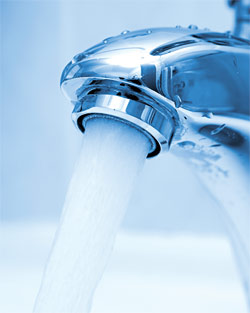New Fluoride Recommendations
Dear Doctor,
I have always believed that fluoride is good for teeth, so why has the government just recommended a reduction of fluoride in water supplies?

Dear Betsy,
Here is the issue at hand: fluoride's effectiveness in making tooth surfaces, both enamel and dentin, more resistant to decay is now beyond scientific doubt. The optimal amount of fluoride necessary to make teeth resistant to decay is 0.7-1.20 milligrams per liter mg/L, or ppm (parts per million), while preventing any problematic effects. In recent years, general and pediatric dentists have been noticing an increased prevalence of a condition known as Dental Fluorosis. It manifests as “mottling” of the tooth surface enamel with the appearance of very small white spots to fairly extensive brownish discolorations. While “mottled” enamel is still more resistant to decay, it can be unsightly depending upon the severity and how bothersome it may visually be to the individual.
Americans have access to more sources of fluoride than they did when water fluoridation was first introduced in the United States over 50 years ago. In addition, the issue has been precipitated by the inability to control fluoride from these other sources that can get into the body and hence into the teeth while they are forming and growing. Other ingested sources of fluoride include foods, beverages and even toothpaste if swallowed. Consequently, the US Government's Department of Health and Human Services (HHS) and the Environmental Protection Agency (EPA) have recommended a reduction in the level of fluoride in water supplies to 0.7mg/L. These new guidelines will update and replace original recommendations provided in 1962 by the US Public Health Service.
We hope this explanation calms your concerns. For your information, fluoridated water has been quoted by the Center for Disease Control (CDC) as one of the ten most effective public health measures of the 20th Century and this continues to be true. We prefer to think of this change as one of moderation and the recommended reduction as appropriate based on more current information. After all, we don't want to throw the baby out with the fluoridated bath water. For more information, read “Fluoride and Fluoridation in Dentistry.”
Here are excerpts from the recent conclusions of the HHS and EPA:
- HHS recommends an optimal fluoride concentration of 0.7 mg/L for community water systems based on the following information:
- Community water fluoridation is the most cost-effective method of delivering fluoride for the prevention of tooth decay;
- Other sources of fluoride exposure have contributed to the prevention of dental caries and an increase in dental fluorosis prevalence;
- Significant caries preventive benefits can be achieved and risk of fluorosis reduced at 0.7 mg/L;
- Recent data does not show a convincing relationship between fluid intake and air temperature thus there is no need for different recommendations for water fluoride concentrations in different temperature zones.




